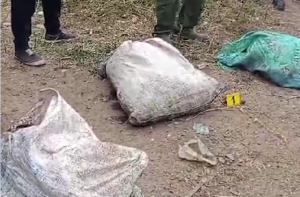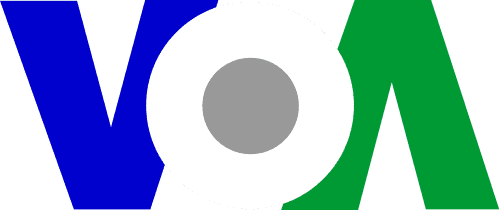In April 2017, the Pentagon launched the U.S. Defense Department’s legislatively mandated quadrennial Nuclear Posture Review to determine American policy, strategy and capabilities. The process now underway involves testimony from experts arguing over how the estimated $27 billion spent annually (growing over the next decade by an additional $10 billion a year) on America’s nuclear arsenal should be allocated.
One claim, made by a number of experts, is that investing in the effort to upgrade America’s exiting nuclear arsenal — the land-based intercontinental ballistic missiles (ICBMs) — would be destabilizing and wasteful. They are, it is claimed, highly vulnerable to enemy attack and therefore do not provide deterrence. Among the 40 House members who suggest killing the land-based missiles is the ranking Democratic member of the House Armed Services Committee.
The opposite position was expressed recently by General Robin Rand, the commander of the Air Force Global Strike Command (AFGSC). He persuasively argued that, far from being either destabilizing or unnecessary, “Our bomber and Intercontinental Ballistic Missile (ICBM) forces, and our nuclear command, control, and communications systems defend our national interests, assure our allies and partners, and deter potential adversaries.”
Addressing the Senate Armed Services Strategic Forces Subcommittee on June 7, Rand said, “ICBMs are the sole weapon system capable of rapid global response and impose a time-proven and unpalatable cost to attack by peer, near-peer and aspiring nuclear nations.”
The discrepancy in viewpoints stems from the difference in perception about American nuclear power and deterrence. Those who disagree with Rand are stuck in Cold War thinking, which has become largely irrelevant in today’s world. To understand this better, a review of the history of the U.S.-Soviet arms race is necessary.
In January 1967, U.S. President Lyndon Johnson announced that the USSR had greatly expanded its powerful multiple-warhead land-based missiles, as well as having begun to build an anti-ballistic-missile defense system (ABM) around Moscow — which would enable it to launch a first strike against the U.S. without fear of an effective retaliation against Soviet leadership bunkers — and called for strategic arms limitations talks (SALT).
Johnson’s successor, Richard Nixon, continued with the process, formally launching the negotiations in November 1969 that led to the signing of the SALT I executive agreement in May 1972. When Gerald Ford became president, he agreed with Soviet President Leonid Brezhnev on a general framework for a second agreement — SALT II — marginally to limit the deployment capabilities of each side, but still allow major increases in warheads, especially powerful, multi-warhead land-based Soviet missiles.
Although SALT II was signed in June 1979 by Ford’s successor, President Jimmy Carter, it was never ratified by the Senate, members of which, on both sides of the aisle, argued that it would not “reverse trends in the military balance adverse to the United States.” A week after 19 senators expressed this warning in a letter to Carter, the Soviets invaded Afghanistan and Carter withdrew the treaty from further consideration.
Carter’s successor, Ronald Reagan — who had been vehemently opposed SALT II before his election — knew its upward limits would readily accommodate his proposed modernization efforts and thus agreed to abide by it in principle. But here, he switched gears while pursuing a markedly different military and diplomatic avenue, in the form of the Strategic Arms Reduction Treaty (START). Reagan proposed that the U.S. simultaneously modernize while seeking reductions, instead of merely allowing huge increases in warheads under the SALT process. This also challenged the Soviet idea of a nuclear freeze — especially in that the Soviets were well through their nuclear modernization and the United States had not even begun.
Early in the Reagan administration, the U.S. still continued seeking to make its land-based silo missiles better able to withstand a massive Soviet strike. Many plans were examined, but all were expensive and required the use of a great deal of land on which to move the missiles on trains, trucks or mobile launchers.
Ultimately, in 1983, Reagan reached a simple, but elegant, solution: a three-step program. First, deep reductions in nuclear weapons; second, putting the new, modern, large 10-warhead Peacekeeper land-based missiles in existing Minuteman silos, and third, simultaneously developing a much smaller mobile missile with only one warhead, to be built later. This was essentially accomplished during the three successive administrations after the end of the Cold War, but with one key change. Given that the number of Russian and American strategic warheads eventually were reduced by more than 90% under the START I, Moscow and New START Treaties, American silo-based missiles — all with only a single warhead — became fundamentally survivable, even deployed in silos where they remain today.
 A Minuteman III intercontinental ballistic missile in its silo in Whiteman Air Force Base, Missouri, circa 1980. (Image source: U.S. Department of Defense) A Minuteman III intercontinental ballistic missile in its silo in Whiteman Air Force Base, Missouri, circa 1980. (Image source: U.S. Department of Defense) |
The situation is therefore now the opposite of what it was during the 1970s and 1980s. At the height of the Cold War, the U.S. — with 1,000 American missile silos — faced more than 13,000 Soviet (subsequently Russian) warheads, or a 13-to-1 ratio. Today, we face roughly 1,750 Russian warheads but have 450 silos, a 4-to-1 ratio. In other words, the strategic environment became more stable, not less, and eliminating the very nuclear triad responsible for this stability makes no sense.
Although the nuclear triad was conceptualized and developed during the Cold War, maintaining it is just as imperative today. ICBMs are as highly stabilizing now as they were highly destabilizing prior to the dramatic reduction in the number of warheads from 1981-2017.
Why is that?
In 1989, America had 1,000 nuclear missile silos, and a small number of additional bomber and submarine bases and submarines at sea, facing 13,500 Soviet warheads. Today, the U.S. has 450 such silos facing 1,750 Russian warheads. That is a switch from a ratio of 13 Russian warheads to every U.S. missile silo, to a ratio of 4 Russian warheads to every U.S. missile silo. Getting rid of Minuteman ICBMs would reverse that progress and make the ratio even worse, with 175 Russian warheads to every U.S. missile silo. How is that an improvement?
It is crucial, therefore, to continue to invest in modernizing the ICBMs. As for the suggestion — among some of the less extreme anti-ICBM analysts — that the current ICBM force be extended for a few more years and modernization be reassessed later — is not a viable option, according to General Rand. He says that the U.S. “cannot afford to delay modernization initiatives” while the “American people and our allies are counting on congressional action to fund our nuclear enterprise modernization efforts.”
Let us hope that those who do not grasp how necessary it is for the United States to go forward with the ground-based strategic deterrent have little influence over the Nuclear Posture Review that is currently underway. America’s ability to defend itself is at stake.
Dr. Peter Huessy is President of GeoStrategic Analysis, a defense consulting firm he founded in 1981, as well as Director of Strategic Deterrent Studies at the Mitchell Institute for Aerospace Studies. He was also for 20 years, the senior defense consultant at the National Defense University Foundation.
























